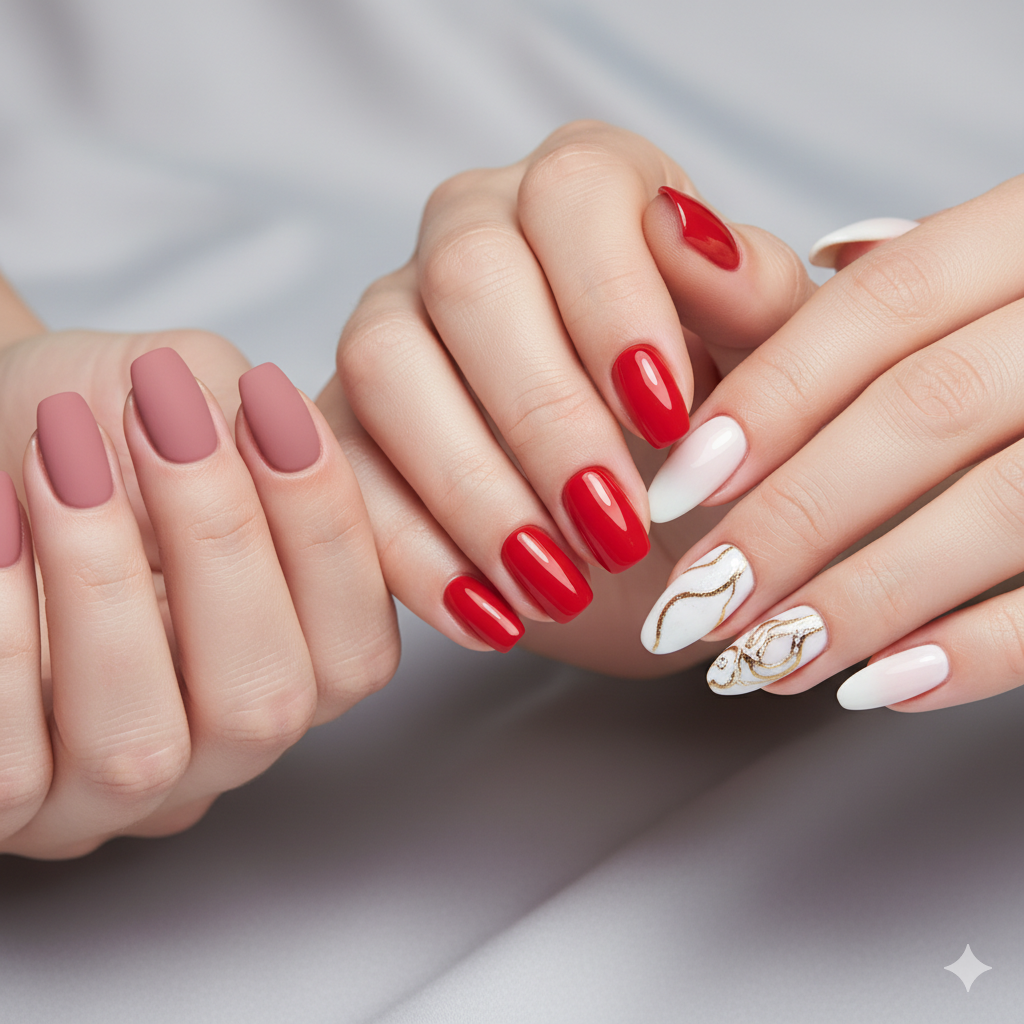Walking into a salon and facing a menu of options can be confusing. You hear technicians and clients talking about gels, dip powders, and acrylics. Figuring out the real story behind each is the best way to choose your ideal manicure. The ongoing debate over gel vs dip vs acrylic nails is less about which is superior and more about what fits your lifestyle, budget, and personal goals.
Each technique comes with its own set of benefits and potential pitfalls. This guide will walk you through everything, clarifying the application, durability, cost, and health considerations. Armed with this knowledge, you can make a choice you feel great about at your next appointment. At the end of this guide, you’ll also find a handy checklist you can download and take with you to the salon!
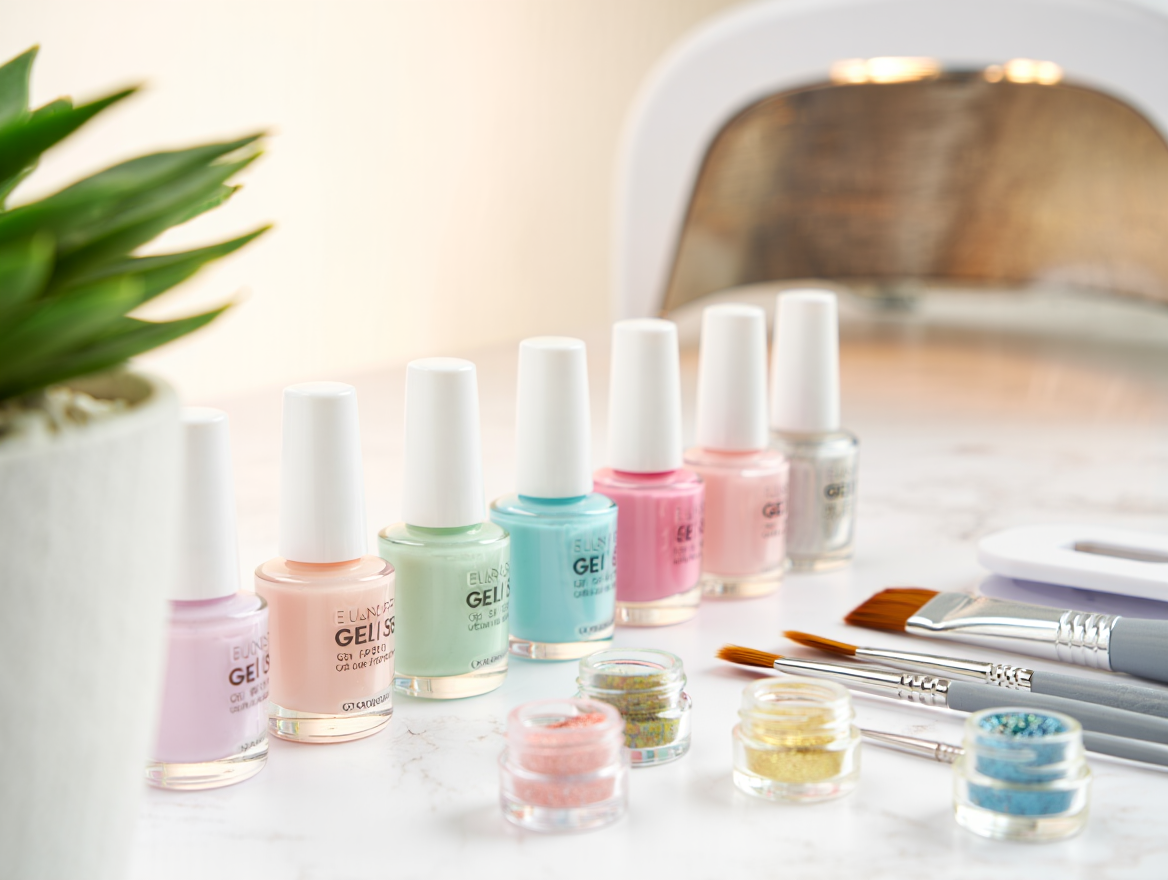
Overview of Nail Enhancements
Decorating and strengthening fingertips is hardly a new idea. While people have been at it for centuries, today’s technology presents choices that are more advanced than ever before. Gels entered the scene offering a glossy, tough finish that classic polish couldn’t touch. Acrylics delivered unmatched strength and the power to create dramatic length. Dip powders then carved out their niche as a durable alternative that sidesteps the need for UV curing. The main distinction in the gel vs dip vs acrylic nails discussion comes down to their chemical makeup and how they’re applied.
The Core Differences in Application
Each system is built using a distinct method. A technician brushes on gel nails much like a traditional polish. Every layer is then cured, or hardened, under an LED or UV lamp. This light triggers a chemical reaction in the gel, forming a strong yet flexible coating. The dip powder technique involves applying a base resin, which is then dipped into a fine-colored powder. A special sealant, the activator, hardens the mixture. This sequence is repeated for full coverage and resilience. Acrylics are born from mixing a liquid monomer with a powder polymer, creating a putty-like bead that a professional sculpts into the desired shape, where it air-dries into a rock-solid finish.
Why Your Choice Matters
Picking the right service goes beyond simple looks. Your choice has a real impact on your wallet, your schedule, and the condition of your natural plates. Some methods take longer to put on and take off. Others last longer, saving you a few trips back to the salon. If your own are brittle, one option might offer better protection than another. The best gel vs dip vs acrylic nails decision should line up with your day-to-day life. Someone who is hard on their hands has different requirements than a person working at a desk. A smart choice means your manicure truly works for you.
What is Gel? Pros & Cons
Gel manicures are celebrated for their incredibly shiny finish and pliable feel. The polish itself is a blend of acrylic monomers and oligomers. When that formula is exposed to UV or LED light, its molecules link together and harden. This curing process results in a durable, glossy layer over the natural surface. Gel can be used for a long-wearing polish job or to build extensions using a thicker builder formula. The sheer versatility of gel nails keeps them at the top of salon request lists everywhere.
The Application and Curing Process
Putting on gels is a precise affair. A technician starts by prepping the natural plate, which involves shaping, light buffing, and cuticle maintenance. A base coat goes on first to anchor the color. Next, two or three thin layers of gel polish are brushed on. Following each coat, your hand goes under an LED or UV lamp for 30 to 60 seconds. The lamp solidifies the gel, making it tough and chip-resistant. To finish, a top coat is applied and cured, locking in that brilliant shine. The entire experience is odorless and generally quite fast.
Advantages and Disadvantages of Gel Nails
Gel nails bring some attractive benefits to the table. They deliver a beautiful, lasting gloss that regular polish just can’t match. They also feel more flexible than other enhancements, which helps prevent chipping. Still, there are downsides to weigh in the gel vs dip vs acrylic nails comparison.
Pros:
- Feels natural and lightweight.
- Maintains a high-gloss finish for weeks.
- Application is typically faster than acrylics.
- No strong chemical smells during the service.
- Removal is a gentle soak-off process when done right.
The biggest risk comes from incorrect removal. If you peel or pry off the gel, you can pull off layers of your natural plate along with it. A study on health confirmed this danger. A 2017 study from the University of Manchester found that repeated, aggressive buffing and improper gel removal were leading causes of plate thinning. The routine exposure to UV lamps has also sparked some debate about skin health, though most experts agree the risk is minimal.
One of the most important rules for your hands is to always resist the urge to pick or peel off your manicure, no matter the type.
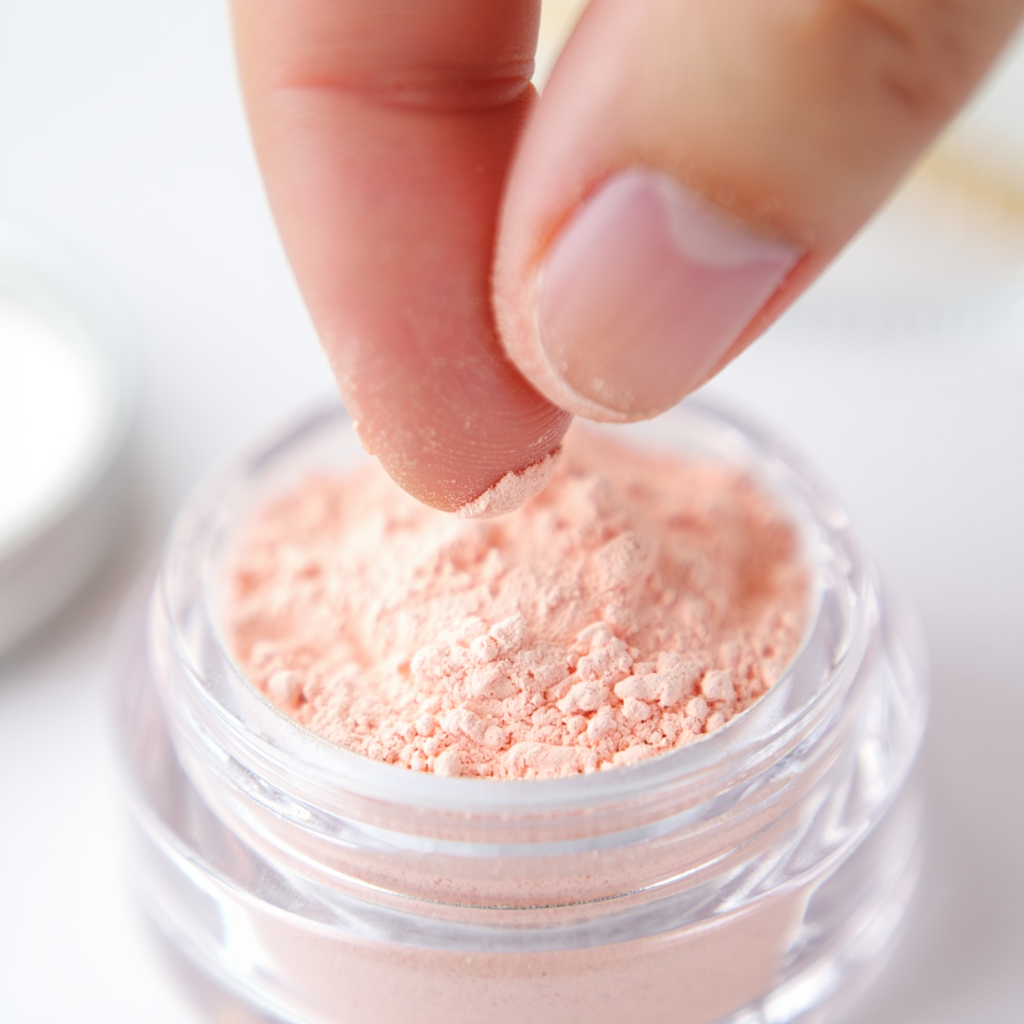
What is Dip Powder? Pros & Cons
Dip powder nails have become a go-to for those wanting something between gel’s flexibility and acrylic’s toughness. The system relies on a strong resin and a finely milled powder. Unlike gel, it doesn’t need UV light to cure. Unlike traditional acrylics, there’s no manual mixing of liquid and powder. You get a strong, durable manicure that can easily last a month or more, making dip powder nails a strong contender for anyone who prioritizes longevity.
How the Dip System Works
The application of dip powder follows a clear, structured sequence. First, the surfaces are prepped. A dehydrating bond is applied, then a clear base resin is brushed on. The finger is then dipped into the colored powder at an angle. After brushing away the excess, the base and dip steps are repeated to build up color and strength. Next, a liquid activator is brushed over the surface, which causes an instant chemical reaction that hardens the product. The enhancements are then buffed into a smooth shape before the final glossy top coat is applied. This unique method is a major factor in the gel vs dip vs acrylic nails choice.
Comparing Dip Powder to Other Manicures
Dip manicures present their own distinct set of advantages and disadvantages. They are often praised for their strength and longevity, frequently outlasting gel polish. The absence of UV light in the process is a big plus for many people. The conversation around dip powder nails often centers on their resilience.
| Feature | Dip Powder Nails | Gel Nails |
| Durability | Very High (3-5 weeks) | Moderate (2-3 weeks) |
| Application | No UV/LED light needed | UV/LED light required |
| Flexibility | Low (very rigid) | High (more flexible) |
| Removal | Soak-off (can be lengthy) | Soak-off (generally faster) |
| Odor | Some odor from activator | Odorless |
A significant concern with this method is salon hygiene. Some places might dip multiple clients’ fingers into one pot of powder, a practice that can spread germs. A clean salon will pour the powder over your finger instead.
“Hygiene should be non-negotiable. Always ask your technician if they are using a fresh portion of powder for you or the pouring method to prevent cross-contamination,” advises Dr. Dana Stern, a board-certified dermatologist specializing in nail health.
This pros/cons analysis is crucial for making a safe choice. The rigidity of the finished product is also something to consider; while it adds strength, it can be prone to cracking under a sharp impact.
What is Acrylic? Pros & Cons
Acrylics are the original heavy-hitters of the beauty world. They are legendary for their incredible strength and design potential. This enhancement is made by mixing a liquid called a monomer with a powder called a polymer. This blend creates a moldable bead that is sculpted over the existing plate, often with a tip or form to add length. It then hardens by air-drying into a solid, protective layer. Acrylics are the top choice for creating long, dramatic shapes and serving as a canvas for complex art. This acrylic nails comparison shows why they’ve been a salon staple for decades.
The Sculpting Process
Applying acrylics is a true skill that requires an experienced professional. The service starts with thorough prep, and tips are often glued on to create instant length. The tech then dips a brush into the monomer liquid before picking up a small amount of polymer powder. This forms a workable bead of acrylic. The bead is placed on the surface and expertly pressed and shaped to build a smooth, seamless enhancement. The material hardens in minutes, after which the technician files and buffs it to perfection before adding polish.
Strengths and Weaknesses of Acrylics
Acrylics have earned their reputation for good reason, but they aren’t flawless. They provide unparalleled strength, which is their main appeal. At the same time, they are the most high-maintenance option. The gel vs dip vs acrylic nails decision often comes down to this balance of durability versus upkeep.
Cons:
- The application process creates strong chemical fumes.
- Can appear thicker and less natural than gel or dip.
- Incorrect application can trap moisture and lead to infections.
- Requires fills every 2-3 weeks to cover new growth.
- Removal involves a long soak in pure acetone.
The primary benefit of acrylics is their sheer toughness. They are very difficult to break, making them ideal for long extensions. This same rigidity can be a drawback, however. If an acrylic enhancement does break, it can cause significant trauma to the natural plate beneath it. The chemicals used, especially the monomer, also have a distinct, powerful odor that many find unpleasant. This is a practical factor to consider in any acrylic nails comparison.
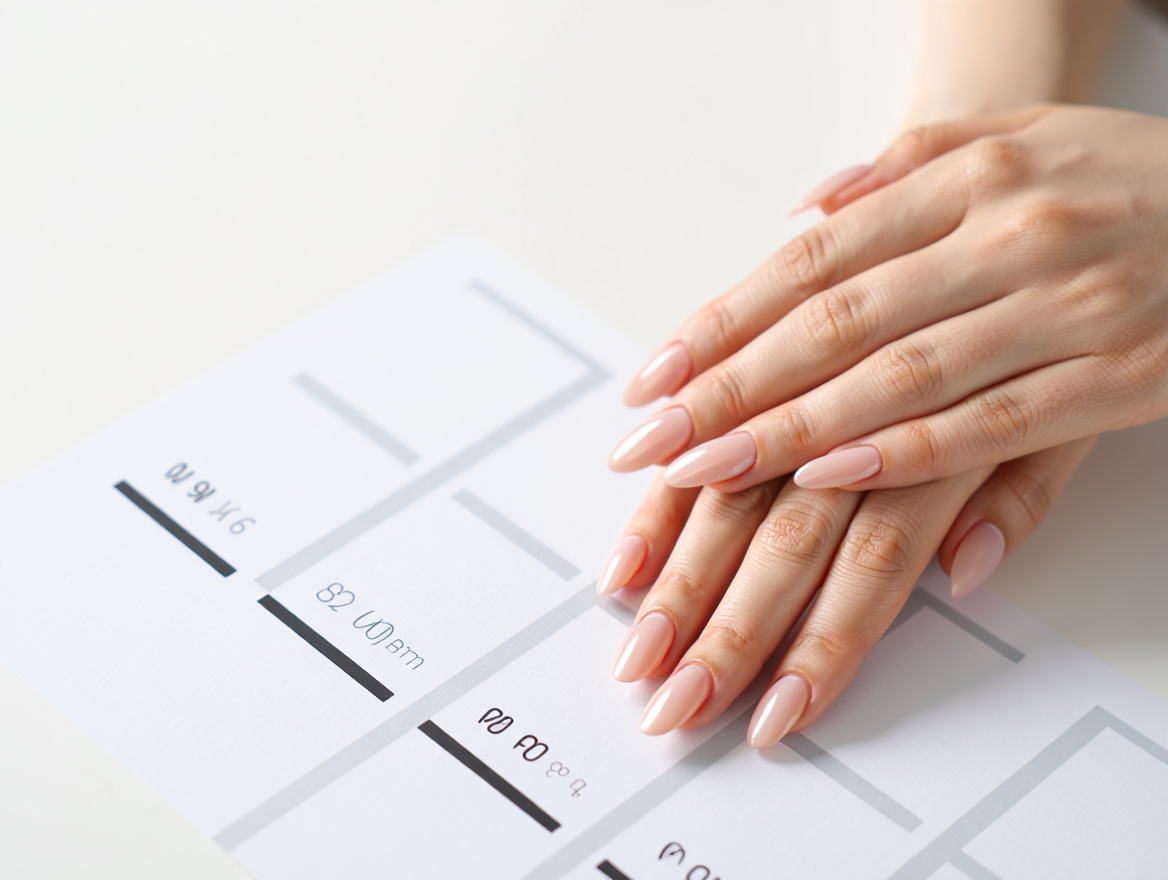
Cost & Durability Comparison
When you’re deciding on a manicure, your budget and your schedule are huge factors. Prices for these services can change a lot depending on your city, the salon’s popularity, and your technician’s experience level. A new set of any of these will cost more than a simple polish, but you have to think about the long game. A cheaper service that needs to be redone every week might end up costing you more time and money. The discussion of gel vs dip vs acrylic nails has to include a realistic look at these numbers.
Breaking Down the Price Tag
As a general rule, a standard gel manicure is the most budget-friendly of the three, with prices often landing between $35 and $60. Dip powder nails usually sit in the middle of the price range, costing about $40 to $65 for a new set. Acrylics tend to have the widest cost variation. A basic full set might start around $50, but if you want extra length or detailed art, the price can easily climb past $100. Don’t forget to include the cost of maintenance. Acrylics need to be filled in every few weeks, which adds another $30 or more to the bill. Gels and dips are usually removed completely and started fresh each time.
How Long Will Your Manicure Last?
This is where the three options really show their differences. Gel nails will typically give you two to three weeks of solid wear before you see any major chipping or lifting. Their flexible quality helps them absorb minor bumps. Dip powder nails are the undisputed champions of longevity, often looking perfect for three to five weeks. Their hard, resin-reinforced structure is extremely resistant to chips.
A 2019 comparative analysis by a cosmetic science program at the University of Cincinnati showed that poly-ethyl-methacrylate, a key ingredient in dip powders, demonstrated superior adhesion and abrasion resistance compared to standard gel polish formulas. Acrylics are also quite resilient, lasting about two to three weeks before the regrowth at your cuticle makes a fill necessary.
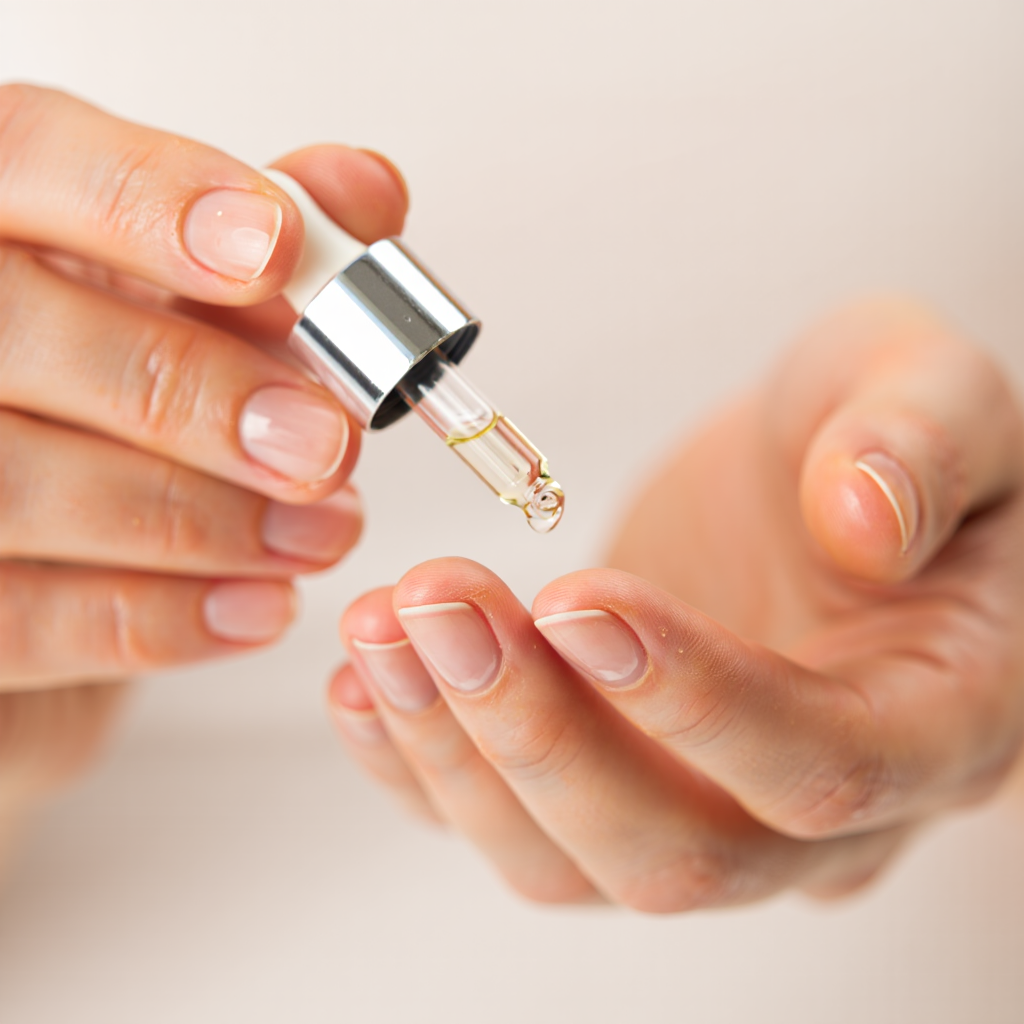
Impact on Nail Health
The long-term condition of your natural plates is a major piece of the puzzle. Any enhancement, if it’s put on or taken off the wrong way, can cause problems. The chemicals, filing, and buffing involved can weaken the surface over time. On the flip side, when done correctly by a good technician, these services can actually shield weak tips from daily wear and tear. Deciding what’s the best for weak nails depends a lot on your individual condition and the quality of the service you receive. This is a very important part of the gel vs dip vs acrylic nails conversation.
Which Option is Best for Weak Nails?
If you struggle with brittleness or peeling, finding the right protective layer is key. Gel polish can be a great choice because its pliability adds a shield without being too heavy or rigid. The fact that it’s removed with a gentle soak is another bonus. Dip powder is another fantastic option because of its sheer strength. The extra thickness it provides can stop tips from bending and breaking. For this reason, many find dip powder nails to be the best for weak nails. However, the removal for dip can sometimes require more soaking and buffing, so a careful technician is a must. Acrylics are not usually recommended for very damaged or thin plates because the application and removal can be intense.
A crucial rule for maintaining health under any enhancement is to moisturize daily. Use cuticle oil and hand cream to keep the surrounding skin hydrated.
Potential Risks and How to Mitigate Them
Each system has its own set of potential issues. With gel nails, the main things to watch for are UV exposure and the potential for thinning if they are buffed too aggressively. For dip powder, the risk often circles back to unsanitary pots of powder. With acrylics, the dangers include painful breaks and potential allergic reactions to the chemicals.
“The biggest mistake I see is clients trying to self-remove their enhancements. Prying or peeling them off rips away layers of the natural nail plate, causing severe damage that takes months to grow out,” states Tom Bachik, a celebrity nail artist.
The best way to avoid these problems is to go to a licensed, reputable technician. And never, ever peel off your manicure. Giving your natural plates a break every few months can also help them stay strong.
Which is best for your lifestyle
The right nail enhancement for you is one that fits into your life without a hitch. Your job, your hobbies, and your personal taste all help point to the right answer. A subtle, low-maintenance manicure might be perfect for one person, while someone else needs a look that is bold and practically indestructible. Thinking about your daily routine is a great way to solve the gel vs dip vs acrylic nails puzzle for yourself. You want something that not only looks great but also survives your real life.
For the Active and Hands-On Person
If you live an active life or work with your hands, strength is everything. Acrylics have long been the top recommendation for this reason. Their hardness can take a lot of abuse, making them a solid choice for nurses, bartenders, or anyone who’s constantly using their hands. Dip powder nails are another excellent, long-wearing alternative. They offer toughness similar to acrylics but feel a bit lighter. Gel nails, being softer, might be more likely to chip under the strain of a highly physical routine.
For the Natural Look Enthusiast
If you just want your own fingertips to look polished and perfect, gel is your best bet. Gel polish applies in thin layers and has a brilliant shine that enhances your appearance without adding a lot of thickness. It is the most natural-looking of the three choices. Dip powder can also look quite natural if it’s applied with a light hand. Acrylics are typically the bulkiest of the options and can look less natural, especially when a lot of length is added. The acrylic nails comparison often highlights their more dramatic appearance.
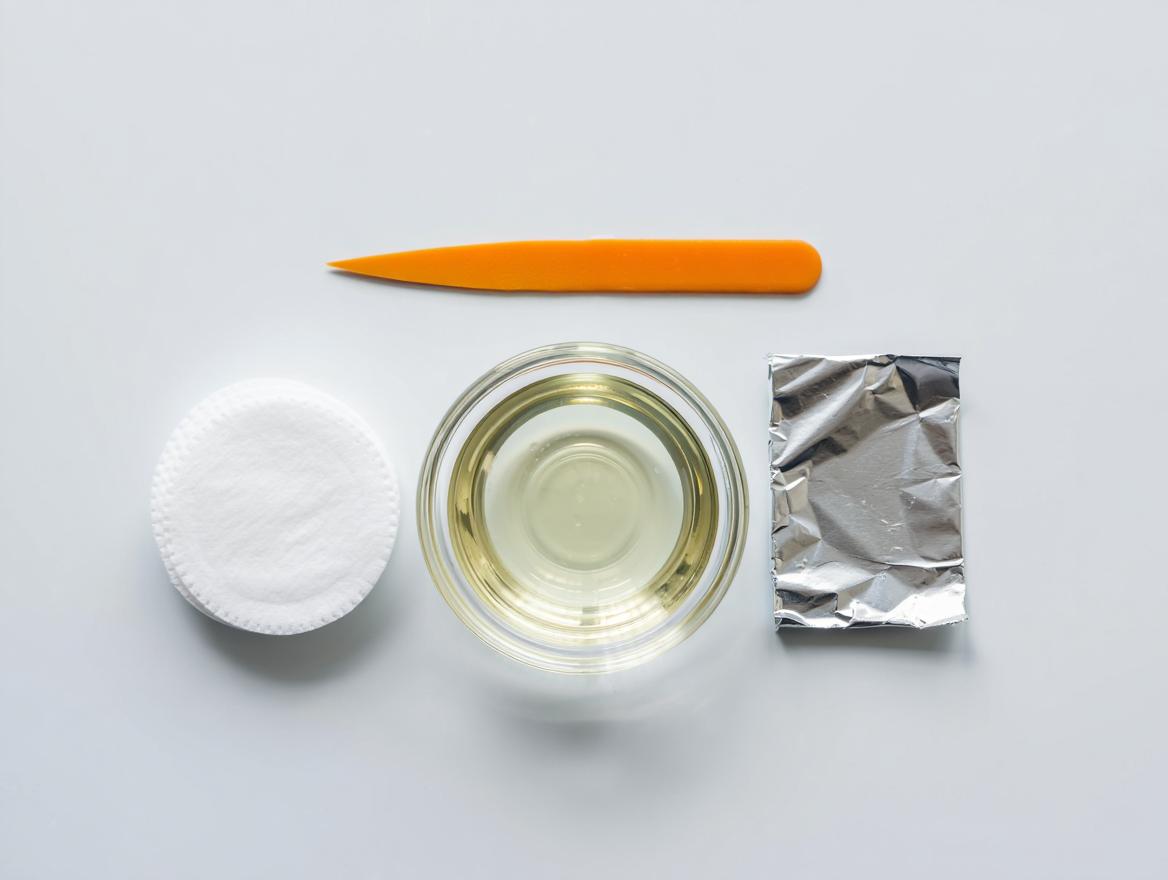
Removal & maintenance tips
Taking care of your manicure and removing it properly are just as important as the application itself. The way you handle the removal process will make or break the health of your plates afterward. Doing it wrong can leave them thin, peeling, and broken. While having a pro do it is always the safest route, you can do it at home if you have patience. Following the correct procedure is a critical part of the gel vs dip vs acrylic nails experience.
Safe At-Home Removal Guide
Taking off your manicure at home takes time and the right supplies. If you rush it, you’ll cause damage. This guide focuses on gel and dip powder, as acrylics are best left to a professional due to their toughness.
Before starting, get your tools together: a coarse file, 100% pure acetone, cotton balls, aluminum foil, a wooden cuticle stick, and a soft buffer.
- Step 1: File the Top Layer. The shiny top coat on gels and dips is designed to be tough. You have to break through it. Use a coarse file to gently scuff the entire surface until it looks dull and dusty. Be careful not to file all the way down to the natural plate.
- Step 2: Soak the Surfaces. Drench a piece of a cotton ball in pure acetone. Place it on top of your finger, making sure it covers the whole enhancement. Tightly wrap the fingertip in a small square of foil. This traps heat and stops the acetone from evaporating. Do this for all ten fingers.
- Step 3: Wait Patiently. This is the most important step. Let them soak for at least 15 to 20 minutes. Dip powder might need closer to 30 minutes. You’ll know it’s working when the product starts to look soft and dissolved.
- Step 4: Gently Scrape. Unwrap one finger. The enhancement should look gummy and flake off easily. Use the gentle edge of a wooden stick to push the softened product off. If you meet any resistance, wrap it back up and soak for another five minutes. Never force it.
- Step 5: Buff and Hydrate. Once the product is gone, lightly buff your surfaces with a soft buffer to smooth them. Wash your hands thoroughly and immediately massage a good amount of cuticle oil and hand cream into your skin and cuticles to restore moisture.
When to See a Professional
Even though you can do removals at home, sometimes you really should see a pro. If you notice any lifting between your plate and the product, head to the salon. Trapped moisture in that gap can lead to an infection. If you have very long acrylics or a lot of 3D art, a technician can remove them much more safely. They can also give you an expert opinion on the health of your plates. For regular upkeep, like acrylic fills, a professional is required to maintain the structure and strength of the enhancement. The gel vs dip vs acrylic nails decision also involves knowing when to call in an expert.
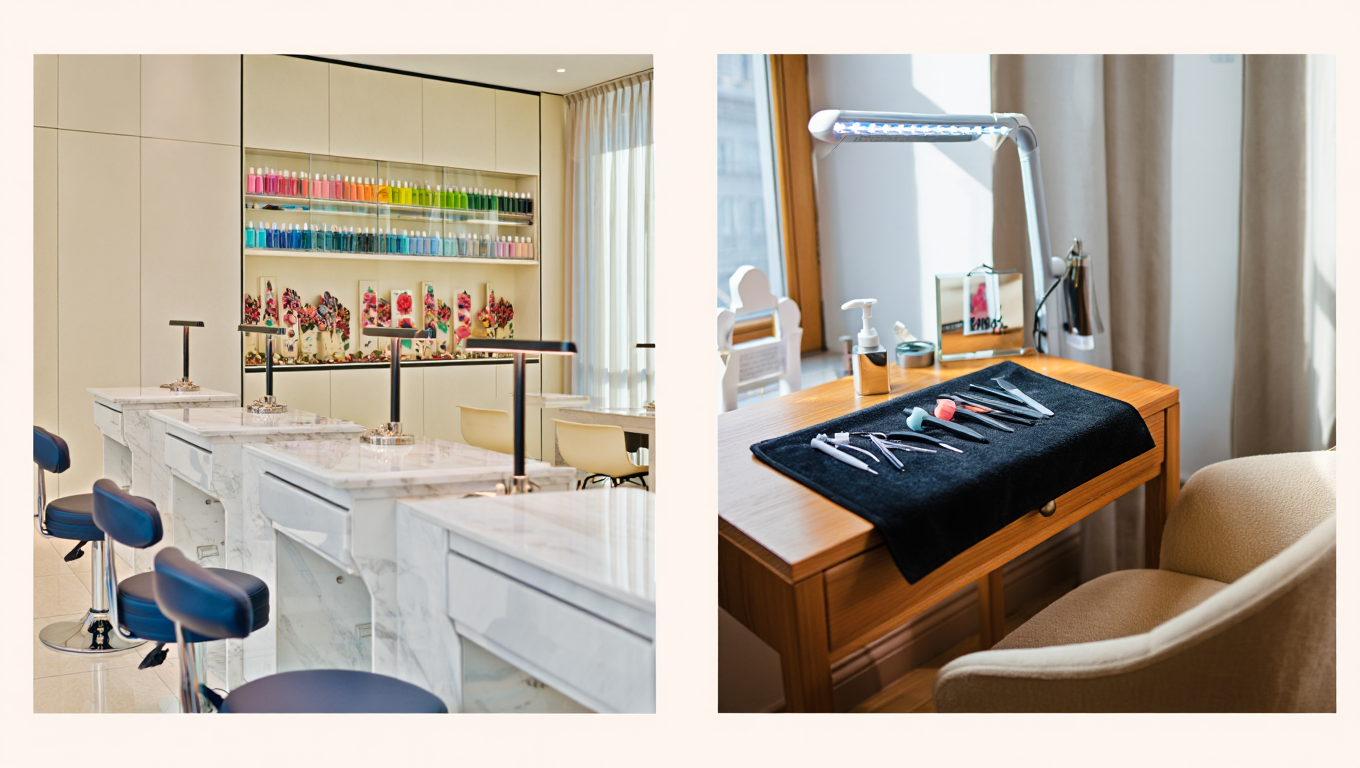
Salon vs at-home
The explosion of DIY beauty has put salon-quality kits on store shelves. You can now try your hand at gel, dip, and even acrylic manicures at home. This leaves you with a choice: pay a professional or do it yourself? Both paths have their clear advantages and disadvantages. Your decision will likely come down to your budget, your patience, and the amount of time you’re willing to dedicate to learning. This is the last stop on the gel vs dip vs acrylic nails journey.
The Professional Salon Experience
Going to a salon means you’re paying for expertise. A licensed technician knows how to properly prep surfaces, apply the product for a lasting finish, and can spot potential health problems. They use high-quality products that are often stronger and more reliable than what’s sold in consumer kits. Plus, the experience itself can be a relaxing treat. The downside, of course, is the cost. Salon appointments are a recurring expense, and you have to book them in advance.
DIY Kits: What to Know
At-home kits offer amazing convenience and can save you a lot of money over time. After the initial purchase of a kit and a lamp, you can do many manicures for the price of one or two salon visits. You get to do your manicures on your own schedule. The trade-off is the significant learning curve. It takes real practice to get the application right, especially with dip and acrylic systems.
You run a higher risk of doing it wrong, which can cause damage. A consumer report survey conducted in 2021 in New York found that 45% of at-home gel kit users experienced peeling or brittleness, which they attributed to the learning curve with removal. The quality in DIY kits can also be hit-or-miss compared to professional-grade supplies.
FAQ
How do I choose between gel, dip, and acrylic?
Think about your priorities. For a natural look that lasts 2-3 weeks, go with gel. For maximum durability that can last a month or more, especially if you’re hard on your hands, pick dip or acrylic. If adding significant length is your main goal, acrylics are the best tool for the job.
Why do my nails feel weak after removing an enhancement?
That weak feeling can come from a few places. Too much filing during prep can thin the plate. The acetone soak, while necessary, can be very dehydrating. But the most common cause of damage is peeling or scraping the product off impatiently instead of letting the acetone do its job.
What is the fastest manicure option at the salon?
A standard gel manicure is usually the quickest service of the three. Applying it is a lot like using regular polish, and the curing time for each coat is very fast, often just 30-60 seconds. Dip powder and acrylic applications are more hands-on and require more shaping, so they naturally take longer.
Can I be allergic to any of these products?
Yes, allergic reactions are possible with any nail enhancement. The most common culprit is an ingredient family called acrylates, which are found in all three systems. An allergy might show up as redness, itching, or swelling on the skin around the fingertip. If you have sensitive skin, it’s a good idea to ask for a small patch test first.
Is it okay to switch between these manicure types?
Absolutely. Switching between services is perfectly fine and can be a great way to find what you truly prefer. The key is ensuring a complete and safe removal of the old product before applying the new one. Trying each option helps you personally settle the gel vs dip vs acrylic nails debate and discover which one best suits your lifestyle and nail condition.
Struggling to choose your next manicure? This video provides an in-depth acrylic nails comparison with dip powder and the ever-popular gel nails. We break down the key differences, pros, and cons of each enhancement method to help you find the perfect match for your lifestyle and needs.
Conclusion
Trying to pick a service can seem complicated, but breaking it down makes the choice much clearer. The gel vs dip vs acrylic nails discussion doesn’t have a single winner because the best option is different for everyone. Gels provide a beautiful, natural-looking shine that’s perfect for everyday life. Dip powders deliver incredible durability, making them a great fit for anyone who needs a low-maintenance manicure that lasts. Acrylics hold their title as the ultimate solution for creating long, strong, and dramatic extensions.
Ultimately, the right choice is a personal one that balances how you want your fingertips to look with the realities of your life. Think about the health of your natural plates, your daily routine, and your budget. Talk openly with your technician about what you’re looking for. A good pro can give you a recommendation tailored just for you. By choosing wisely, you can enjoy a gorgeous, long-lasting manicure that you absolutely love.
Feeling more confident? To make your next salon visit even easier, we’ve created a practical checklist. This one-page guide summarizes the key questions to ask your technician and the best aftercare tips to extend the life of your manicure. It’s the perfect tool to help you analyze the pros/cons in real-time and ensure you get the best results whether you choose gel nails or dip powder nails. Download it, print it, and take it with you to your next appointment to make the perfect choice.
